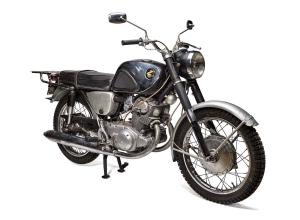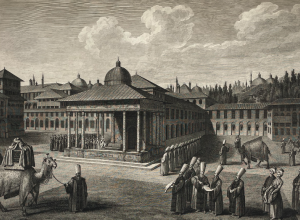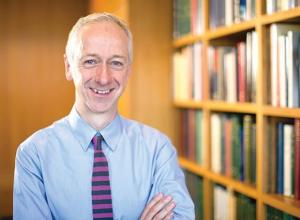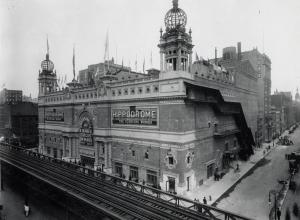Sotheby’s to Auction Bay Psalm Book
NEW YORK, 12 April 2013 — On 26 November 2013, Sotheby’s New York will auction one of the finest surviving copies of the Bay Psalm Book — the first book printed in what is now the United States of America. The Congregationalist Puritans who emigrated to Massachusetts Bay in search of religious freedom quickly set about to translate and produce a version of the Book of Psalms that was a closer paraphrase of the Hebrew original than the one they had carried from England. The first edition of the resulting Bay Psalm Book was printed in Cambridge, Massachusetts, in 1640, and Sotheby’s will auction one of the 11 surviving copies in the dedicated auction. The present example comes from the collection of the Old South Church in the heart of Boston, Massachusetts — one of two remarkable copies presently in its collection - and the proceeds of the sale will benefit the church’s mission and ministry in the Greater Boston area.
No example of the Bay Psalm Book has appeared at auction since 1947, when another copy achieved a record auction price for any printed book at the time — many multiples of what other icons of printing achieved in that period, including the Gutenberg Bible, Shakespeare’s First Folio and Audubon’s Birds of America**. The present example of the Bay Psalm Book from the Old South Church’s collection comes to auction at Sotheby’s New York with a pre-sale estimate of $15/30 million*.

The Book will be on view in Sotheby’s York Avenue galleries from 12-14 April, before embarking on a traveling exhibition in cities such as Philadelphia, Chicago, Los Angeles and Dallas in the coming months — please visit www.sothebys.com/baypsalmbook for updates. The Book will return for exhibition in New York in advance of the auction beginning 18 November, in the week preceding the Thanksgiving holiday in the United States.
David Redden, Director of Special Projects and Worldwide Chairman of Sotheby’s Books Department, commented: “The Bay Psalm Book was not only the first book printed in America, and the first book written in America. This little book of 1640 was precursor to Lexington and Concord, and, ultimately, to American political independence. With it, New England declared its independence from the Church of England.”
Mr. Redden continued: “The Bay Psalm Book is a mythical rarity. Unseen on the marketplace for more than two generations, it has become too rare to collect. Yet here it is today, this modest little book printed in the American wilderness but embodying the values that created our nation: political freedom and religious liberty.”
Nancy S. Taylor, Senior Minister and CEO of Old South Church, said: “With the sale of this extraordinary asset we in tend to strengthen our ministries of mercy, justice, and beauty. We hope to increase our grants and outreach programs, as well as maintain our National Historic Landmark building - open and free to the public, seven days a week — in excellent repair.”
Selby Kiffer, International Senior Specialist in Sotheby’s Special Projects department, commented: “Of inestimable significance, The Bay Psalm Book is not simply one of the great icons of book history, it is one of the greatest artifacts of American history.”
The Story of the Bay Psalm Book
One of the fundamental changes in church services shaped by the Reformation was the introduction of psalm-singing by the entire congregation, rather than just by a designated choir. The Puritans who settled Massachusetts Bay brought with them Henry Ainsworth’s version of the Psalms in prose and meter, and also used the paraphrase of 16th-century authors Thomas Sternhold and John Hopkins, who wrote the first metrical version of the Psalms in English. As early as 1636, however, the Puritans were discussing the need for a translation that would more exactly articulate the original Hebrew text. The leading scholars and ministers of Massachusetts Bay determined therefore to produce a new metrical translation. Their paraphrase, based on contemporary English translations but with close attention given to the original Hebrew, was the work of several men who represented the greatest minds of colonial New England at the time, including John Cotton, Richard Mather, and John Eliot. In addition to being the first book printed in the British American colonies, the Bay Psalm Book should be recognized as the first book written in America as well.
The translation of The Whole Booke of Psalmes Faithfully Translated into English Metre (the formal title of the Bay Psalm Book) could be accomplished with the men and materials already in Massachusetts Bay Colony, but its printing required the importation of both. The Reverend Josse Glover, a Calvinist from London, learned of the need for a printing press in New England and raised funds in England and Holland for the purchase of a press, types and paper. He also hired Stephen Daye, who was indentured as a locksmith, to operate the press at Massachusetts Bay.
Glover, Daye and their families set sail for the colonies aboard the ship John of London in 1638. Glover died during the voyage, but Daye and the printing press landed in September. Ephemeral printing is generally believed to have begun in early 1639. Daye’s 18-year-old son Matthew had been apprenticed to a printer before leaving England, and he was probably responsible for much of the work in his father’s shop.
The 1640 edition of the Bay Psalm Book is the earliest surviving product of the Dayes’ press, and was immediately adopted by nearly every congregation in Massachusetts Bay — hence the volume’s familiar name. The new paraphrase was so influential that it was first reprinted in 1647 in England. The second American edition was issued in 1651, and more than 50 additional editions were printed, in both New England and England, over the course of the next century. The “chief divines” of the colony, who, according to the preface of the work, had “Attended Conscience rather then Elegance, fidelity rather then poetry, in translating the hebrew words into english language,” created a work that would shape the religious and social life of the new nation. They also created a new center of publishing: by 1700, Boston had surpassed Oxford and Cambridge to become the second most prodigious printer of English-language books in the world, behind only London.
The original 1640 edition of the Bay Psalm Book comprised 1,700 copies, 11 of which survive today in various degrees of completeness in collections including The Library of Congress, The New York Public Library, Yale University Library and Harvard College Library***.
Because the Book was intended as a utilitarian book for the common people, copies were subjected to hard and constant use, and just six of the 11 copies known to be extant still retain their title pages. Although it was already a very rare book by the early-18th century, the Old South Church managed the remarkable feat of accumulating five copies, two of which remain in the Church’s collection — including the present copy currently on offer.
**The Sale History of the Bay Psalm Book
Because the 1640 Whole Booke of Psalmes is so rare, and since most copies have been (and now all are) held by institutions, the sale history of the book is understandably brief. With few and distant exceptions, the sale history is essentially the history of other copies from the collections of the Old South Church. When a copy was last sold - by Sotheby’s, on 28 January 1947 - it achieved a higher price than any other printed book sold up to that time: $151,000. That record-setting figure dwarfed the auction prices that other great books achieved at the time: just two months after the Bay Psalm Book was sold, Sotheby’s London sold the Old Testament of the Gutenberg Bible for £22,000, and during the same auction season, Parke-Bernet sold a very good copy of the 1623 First Folio of Shakespeare’s works for $22,000. Less than a month prior to the sale of the Bay Psalm Book, Sotheby’s London sold a complete set of the double-elephant folio of John James Audubon’s Birds of American for £2,700. Sotheby’s has sold comparable copies of these three other books for as much as $11.5 million in recent years****.
ABOUT THE OLD SOUTH CHURCH
Gathered in 1669, Old South Church in Boston is one of the most historically significant churches in the United States. The congregation is the steward of storied events: it opposed the ‘witch’ trials, published the first anti-slavery tract, baptized Benjamin Franklin, hosted the meetings that led to the Boston Tea Party and opened its sanctuary as a recruiting station for the Union Army.
Through the centuries, Old South Church has championed abolition, civil and human rights, affordable housing, free speech, LGBT rights and equal marriage. It is an intergenerational and multicultural congregation, engaged in both direct service and justice advocacy.
Old South Church supports some 30 non-profits in Boston. It partners with and supports those organizations with financial grants, volunteers and in-kind services.
For more information, visit www.oldsouth.org.
*** Complete Census
Old South Church, Boston (two copies, including the present); John Carter Brown Library, Providence; Yale University Library, New Haven; the Library of Congress, Washington, D.C.; The New York Public Library, New York; American Antiquarian Society, Worcester; Harvard College Library, Cambridge; Henry Huntington Library, San Marino; The Rosenbach Museum and Library, Philadelphia; The Bodleian Library, Oxford
**** Sotheby’s set the current world auction record for any printed book in December 2010, when it sold a copy of John James Audubon’s Birds of America sold for $11,542,683
FOR MORE NEWS FROM SOTHEBY’S
Visit: www.sothebys.com/en/inside/services/press/news/news.html
Follow:
www.twitter.com/sothebys
&
www.weibo.com/sothebyshongkong
Join:
www.facebook.com/sothebys
Watch:
www.youtube.com/sothebys
Sotheby’s has been uniting collectors with world-class works of art since 1744. Sotheby’s became the first international auction house when it expanded from London to New York (1955), the first to conduct sales in Hong Kong (1973) and France (2001), and the first international fine art auction house in China (2012). Today, Sotheby’s presents auctions in eight different salesrooms, including New York, London, Hong Kong and Paris, and Sotheby’s BidNow program allows visitors to view all auctions live online and place bids in real-time from anywhere in the world. Sotheby’s offers collectors the resources of Sotheby’s Financial Services, the world’s only full-service art financing company, as well as private sale opportunities in more than 70 categories, including S|2, the gallery arm of Sotheby’s Contemporary Art department, as well as Sotheby’s Diamonds and Sotheby’s Wine. Sotheby’s has a global network of 90 offices in 40 countries and is the oldest company listed on the New York Stock Exchange (BID).
*Estimates do not include buyer’s premium and prices achieved include the hammer price plus buyer’s premium.
Images are available upon request.
All catalogues are available online at
www.sothebys.com
or through Sotheby’s
Catalogue iPad App.
# # #















